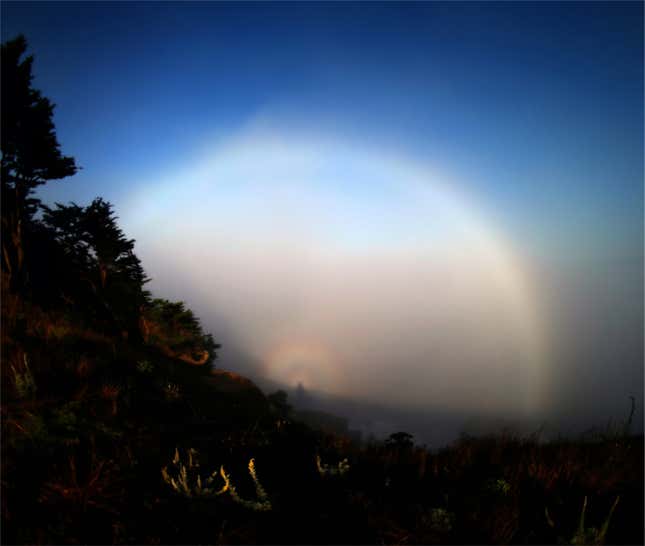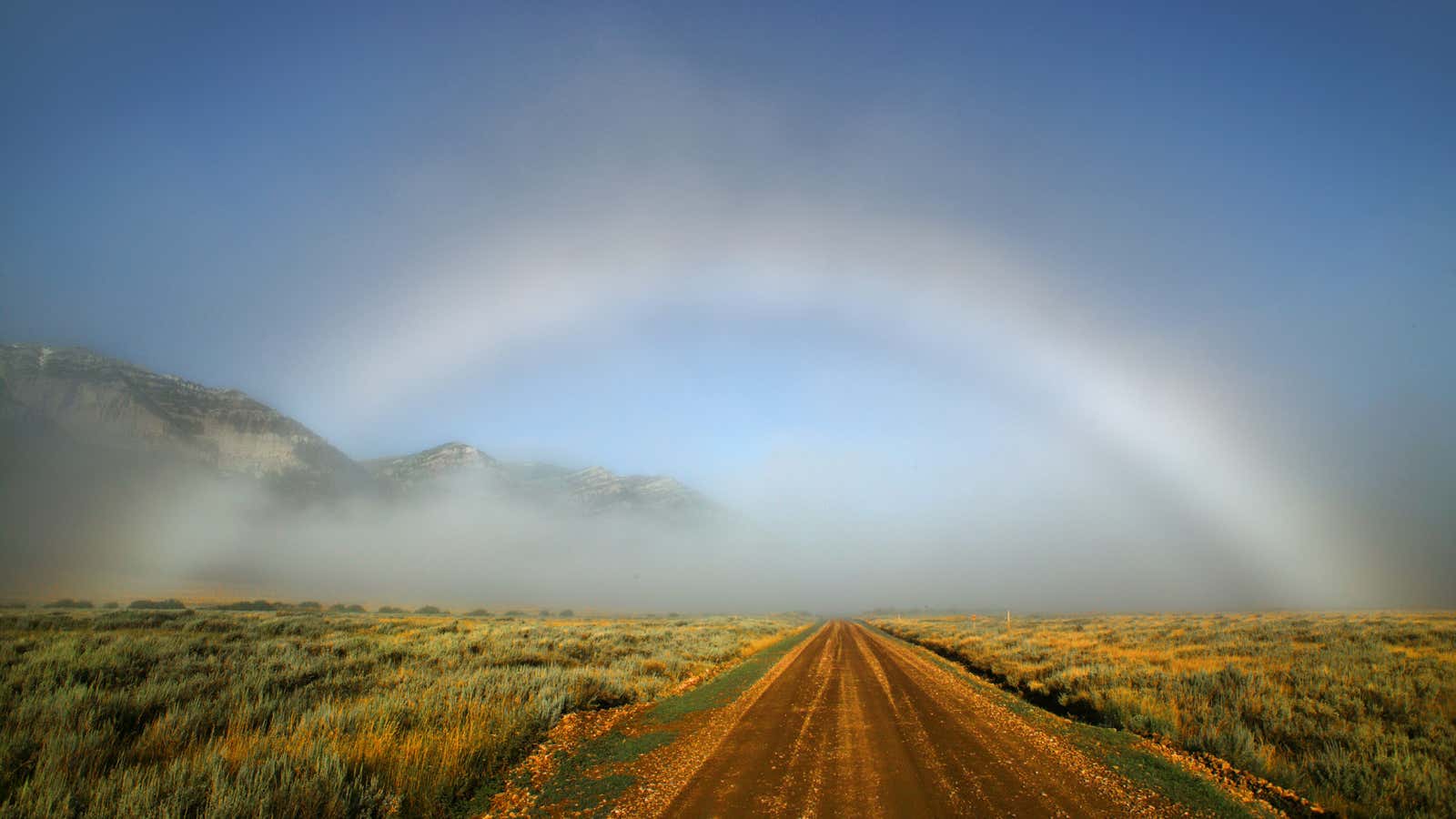Rainbows usually come in a spectrum of seven colors, but on Nov. 17, UK photographer Melvin Nicholson captured the rare sight of a purely white light arch in Rannoch Moor, Scotland. It is a “fog bow,” an atmospheric optics phenomenon similar to a rainbow, but in foggy conditions.
Nicholson first published the photograph of the fog bow neatly arching over a lone tree on a snow-covered moor on his Facebook page. “As soon as I saw this wonderful isolated windswept tree, I knew that it had to be framed by the fog bow,” he wrote.
Fog bows are formed when sunlight meets moisture, refracting light from the tiny water droplets suspended in the air. While rainbows mostly appear after rain fall, as sunlight refracts through larger water droplets, fog bows show up when the sun shines on fog, consisting of much smaller water droplets.

“Due to the small size of the droplets, the light waves don’t spend enough time within the droplet to refract enough to separate cleanly and focus into colors,” US National Weather Services meteorologist Brian Jackson explained. Unlike water droplets following rain, smaller fog water droplets act as much smaller prisms. They can’t refract as much light, but allow light to diffract from the small droplets and merge into a circular white haze as the colors continually overlap each other.
According to The Weather Channel, the best condition for spotting a fog bow is on a slightly foggy day, with bright sunshine on your back, around areas likely to gather humidity, like a field, a mountain valley, at a coast, or on a lakeshore.
